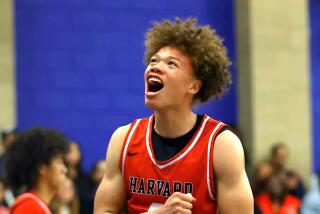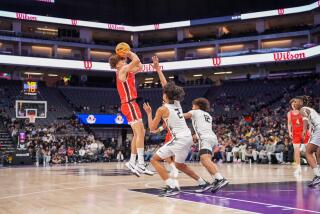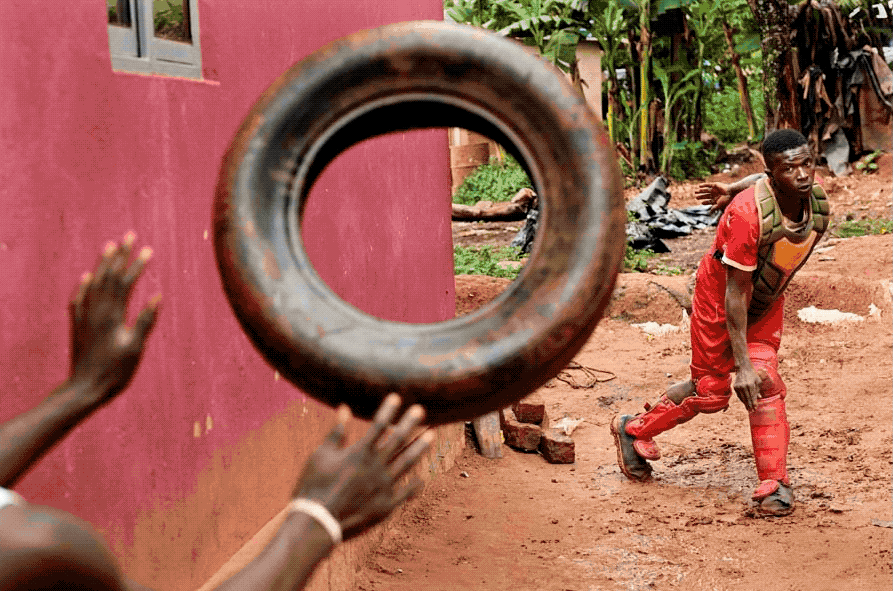Another No. 44 Collapsed, Died Five Days Before Gathers : Sports medicine: Americanâs death in England reaffirms dilemma faced by doctors treating athletes.
The circumstances were uncanny. They were 6-foot-7 basketball players. They were 23 years old. They wore No. 44. They collapsed during games and died five days apart.
Victims of heart problems.
Tony Penny, formerly a Central Connecticut State player, died Feb. 27 in a Manchester, England, hospital after collapsing during a game.
But the similarities to the death of Loyola Marymountâs Hank Gathers donât end there. Pennyâs death, too, exposes the pressures physicians face when caring for athletes who want nothing more than to return to the games they love.
Dr. Milton J. Sands, a cardiologist at New Britain, Conn., General Hospital, understands this dilemma.
He was sued for $1 million last May for disallowing Penny from playing in 1986. Although Penny dropped the suit in December, Sands remains affected by the incident.
âI never dreamed I would have been sued to protect a life,â he said.
Sands said he empathizes with Gathersâ physicians--Michael Mellman and Vernon Hattori--who might be named as defendants in a suit expected to be filed this week in Los Angeles Superior Court on behalf of Gathersâ family.
The doctors find themselves in the midst of controversy involving questions about how the Loyola star, a probable first-round NBA draft choice, could be allowed to play if he suffered from heart problems.
Sands said his dilemma was whether to take care of his patient physically by not allowing him to play or to take care of him psychologically by approving his return.
âPsychologically, it was difficult because the one thing he cared about almost more than life itself was basketball,â Sands said. âTo not allow him to play was to do a disservice.â
Adding to that immense pressure were calls from the Central Connecticut coaching staff, calls Sands termed as subtle reminders as to Pennyâs importance to the team.
âThey would ask, âHowâs he doing? We really need him. When do you think he could get back to play?â â Sands said. âThen the university was asking the same thing.â
Although Penny averaged only 2.5 points, he was the teamâs leading rebounder and a defensive enforcer in his senior year. He started 15 games.
âThe doctors are trying to do the best they can for the athlete,â Sands said. âThe conflict is tremendous. Team members and friends were calling. They all wanted the same thing: âWhen are we gonna get Tony back?â â
Sands treated Penny in 1986 when the basketball player was brought to the hospital after an apparent heart attack. Penny, then 19, complained of chest pains after lifting weights.
He had played a dozen games during the 1985-86 season when he was found to have hypertrophic cardiomyopathy, which is the enlargement of heart and thickening of its muscles. Sands told him to play was to risk death.
Penny did not play. He stayed at Central Connecticut on scholarship, studying toward a dual degree in communications and psychology, which he later earned. He coached incoming freshmen. But for two seasons he missed the game.
Penny, whose parents are from the Caribbean island of St. Kitts, returned to England before his senior year and decided to seek the opinion of a London cardiologist. She and a colleague said he could play, explaining that the condition was normal for black West Indian males.
He returned to Sands armed with medical evidence of his health.
âTony was convinced that he was feeling fine,â said David Rybczyk, assistant coach for Central Connecticut.
Sands would not budge. But the university was more flexible. After all, it had varying opinions from respected physicians.
Penny was allowed to play under an agreement arranged by his attorney and the Connecticut state attorney generalâs office. He had to sign a waiver releasing the university from liability and undergo stress tests periodically to ensure he was healthy. When he skipped a test before the final game of the 1988-90 season, he was not allowed to play.
Letting him play âwas probably the wrong thing to do,â Sands said. âI never wanted to be right like this.â
Rybczyk said he was shocked when he heard of Gathersâ death March 4 after he collapsed during Loyola Marymountâs West Coast Conference tournament game.
âI was just getting over that grieving process when Hank Gathers suffered the same thing and it brings it right back again,â Rybczyk said.
Penny had collapsed the night of Feb. 27 on the bench after playing eight minutes for the Manchester Giants of the English professional league. His coach said he was reaching his potential and had started the past four games.
Then it happened.
âTony was not reckless,â Rybczyk said. âTony was convinced nothing was wrong with him. He told me if he found out he had it he was willing to live with it.â
More to Read
Go beyond the scoreboard
Get the latest on L.A.'s teams in the daily Sports Report newsletter.
You may occasionally receive promotional content from the Los Angeles Times.










